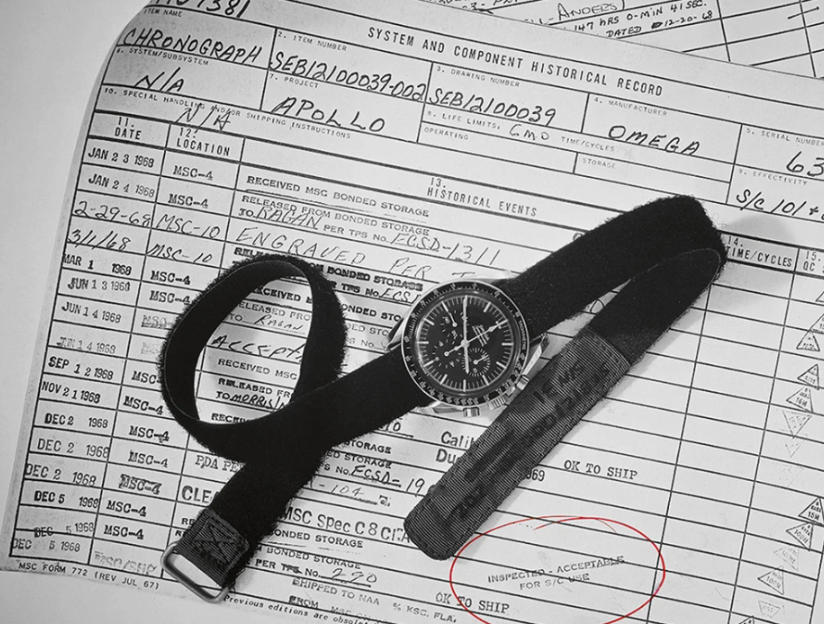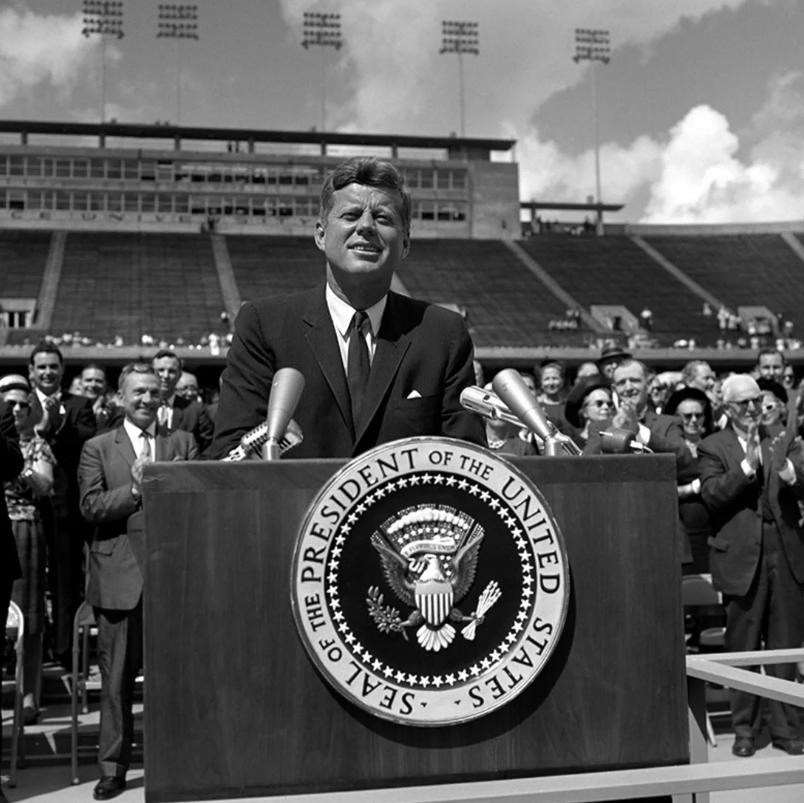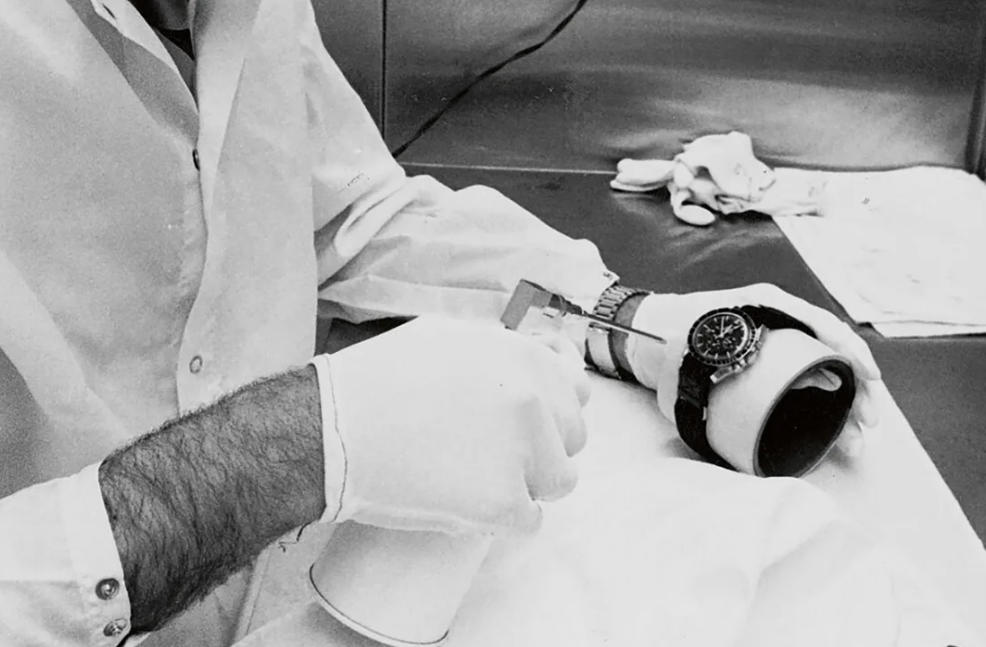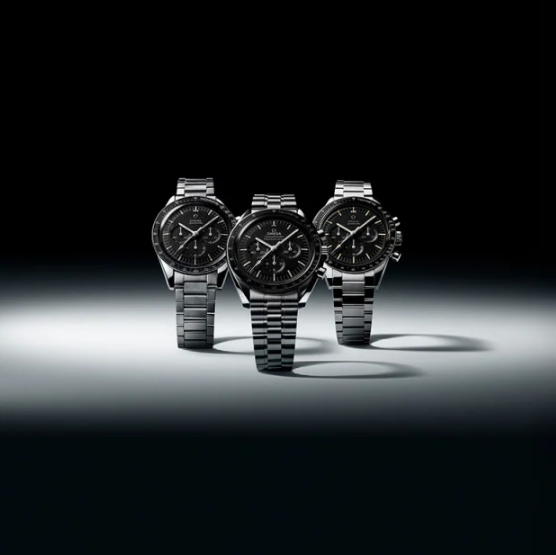Swiss fake Omega Speedmaster Moonwatch watches stands as one of the most iconic timepieces of all times. Its legendary status was cemented 60 years ago, in the spring of 1965, when NASA officially certified it as “flight-qualified for all manned space missions.” Let’s take a detailed look back on the legacy of this extraordinary chronograph on the occasion of the 60th anniversary of this historic designation.

“We choose to go to the Moon”
In 1962, John F. Kennedy stood before a crowd at Rice University and made a courageous proclamation: “We choose to go to the Moon.” Most boldly, the U.S. President pledged to achieve this extraordinary feat before the decade’s end. With that, America’s race into space was launched.

Project Mercury marked the United States’ first manned spaceflight program and became famous for its pioneering astronauts, known as The Mercury Seven. When the program concluded in 1963, these astronauts approached NASA Operations Director Deke Slayton with a request: dependable cheap replica watches uk to accompany them on future missions.
These timepieces were not just accessories; they served a critical purpose. In the event of a failure in the spacecraft’s onboard digital timers, the astronauts would rely solely on their mechanical watches. Reliability and precision were crucial. As NASA prepared for the more advanced Gemini and Apollo missions, it began reviewing all mission equipment. In 1964, Slayton formally requested “high-quality chronographs” from several watch manufacturers. Only four brands responded to his call, one of them was perfect copy Omega watches. Each was asked to submit three wrist-worn chronographs, which would undergo some of the most rigorous testing imaginable.

The testing procedure
Any hardware intended for use on space vehicles first had to be rigorously qualified by NASA’s safety, reliability, and quality control teams. One key figure in this process was engineer James Ragan, whose 36-year aerospace career included the crucial task of testing and certifying the buy clone watches worn by astronauts on manned missions.

When Ragan received watches from four different manufacturers, he immediately disqualified one for failing to meet NASA’s basic specifications for the functional best replica watches. That left three contenders. Each of their timepieces was subjected to an intense series of eleven tests—only those that passed every one would be cleared for spaceflight.
1. High Temperature Test
- Duration: 48 hours at 70°C
- Followed by: 30 minutes at 93°C in a partial vacuum
- Result: Only the Speedmaster survived; two other brands failed during the thermal vacuum phase.
2. Low Temperature Test
- Exposure: 4 hours at -18°C
3. Vacuum Test
- Procedure: Repeated heating in a vacuum chamber followed by immediate cooling to -18°C over several cycles
4. Humidity Test
- Environment: 95% humidity
- Temperature Range: 25°C to 70°C
- Duration: Ten cycles of 24 hours each
5. Corrosion Test
- Conditions: 48 hours in an atmosphere of pure oxygen at 70°C
6. Shock-Resistance Test
- Simulated Space Impact: Six shocks of 40 G
- Directions: Applied in six different orientations
7. Acceleration Test
- Progressive acceleration: Up to 7.25 G for 5 minutes
- Peak acceleration: 16 G for 30 seconds
- Tested across three axes
8. Low Pressure Test
- Conditions: Pressure of 10⁻⁶ atmospheres at 70°C for 90 minutes
- Followed by: 30 minutes at 93°C
9. High Pressure Test
- Conditions: Air pressure of 1.6 atmospheres for 60 minutes
10. Vibration Test
- Frequency Range: 5 to 2,000 Hz
- Duration: 30 minutes
- Acceleration: 8.8 G in three axes to simulate launch conditions
11. Sound Test
- Noise Exposure: 130 decibels
- Frequency Range: 40 to 10,000 Hz
- Duration: 30 minutes

Approved by the astronauts
The Swiss fake Omega Speedmaster watches ST 105.003 successfully passed all eleven of NASA’s rigorous qualification tests. Remarkably, this was the exact same model available to the public in retail stores.
In contrast, 1:1 knock off watches from competing brands failed early in the process—particularly during the high-temperature test. On one model, the large seconds hand warped and interfered with the other hands. On another, the chronograph’s crystal deformed and detached from the case.
